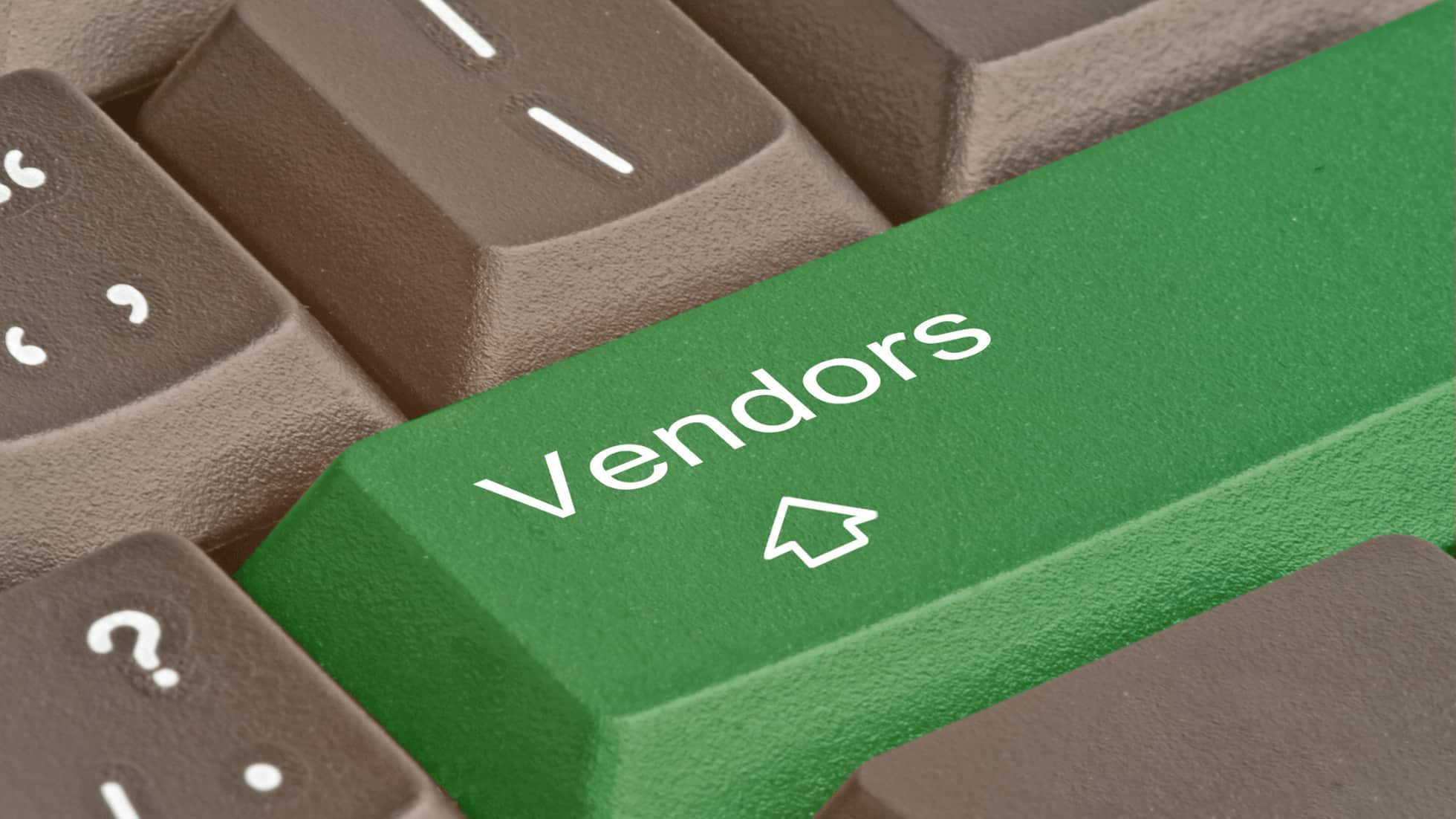Amazon Vendor Central differs from Amazon Seller Central—it's an exclusive invite-only platform where you sell in bulk to Amazon instead of directly to customers. It's perfect for manufacturers and distributors who prefer not to manage sales themselves but still want to use Amazon's large customer base.
If you want to sell big and let Amazon do the rest, you'll find all you need to know in our guide. Learn to use Amazon Vendor Central to your advantage, from its tools to its rules, and grow your brand with less hassle.
Ready to dive into the world of wholesale selling with Amazon? Continue with our guide to get started.
Becoming an Amazon Vendor
To sell directly to Amazon as a vendor, you navigate an invitation process and meet specific eligibility criteria.
Understanding the differences between direct selling to Amazon and operating as a third-party seller can clarify the potential benefits and obligations of the Vendor Central program.
Invitation Process
You can get Vendor Central access when you get invited by Amazon. Amazon's global vendor recruitment team may approach you as a manufacturer or brand owner if your business fits their needs. An application is not an option; an invitation is essential, signaling Amazon's interest in your brand.
Also read: How to Get Invited to Amazon Vendor Central
Vendor Central Registration
Once invited, the registration process involves providing business details and accepting Amazon's terms and conditions.
You'll set up an account on the Vendor Central platform, representing the start of your journey as a first-party vendor.
Amazon Vendor vs. Third-Party Seller
Vendors sell products wholesale to Amazon, while third-party sellers operate on Amazon Seller Central, selling directly to consumers.
As a vendor, you'll see products listed as "Sold by Amazon.com", whereas third-party listings are managed by the sellers themselves.
Benefits of Amazon Vendor Central
Vendors often enjoy promotional advantages, such as Amazon Vine, which aids in generating early reviews for products.
Moreover, having items "Sold by Amazon.com" can increase customer trust and streamline operations, as Amazon handles the majority of the selling process.
Requirements and Eligibility
Eligibility for Vendor Central includes owning a strong brand or being a notable manufacturer.
Amazon typically invites businesses that can preserve or enhance the platform's product quality and variety.
Vendor Central Terms and Conditions
Upon starting the registration, you will encounter terms and conditions dictating pricing, logistics, and other aspects of your partnership with Amazon. Understanding and agreeing to these terms is vital for a favorable business relationship.
Amazon Brand Registry
Enrolling in the Amazon Brand Registry protects your brand and intellectual property on Amazon.
It's advisable for vendors seeking to maintain brand integrity and leverage advanced marketing tools within the Amazon ecosystem.
Tools and Resources for Vendors
Amazon Vendor Central equips vendors with a robust set of resources designed to facilitate efficient operations and enhance product visibility.
You'll have access to a suite of analytical tools and dedicated support options.
Navigating the Vendor Central Dashboard
Your Vendor Central Dashboard is the operational hub where you'll manage daily activities.
Here, you can view purchase orders, monitor inventory levels, and track payments. Crucial performance metrics and notifications are readily accessible, ensuring you stay informed of your account's health.
Seller Support and Resources
As a Vendor Central user, you have access to Seller Support, a service that assists with operational challenges.
Whether you encounter issues with your listings or require guidance on compliance, Seller Support is available to ensure you mitigate any disruptions to your business activities.
-
Seller Support: Reach out for help with technical or account issues.
-
Educational Resources: Utilize tutorials, webinars, and other materials to stay informed about best practices and new features.
Advertising and Promotion Tools
A key component of Vendor Central's resources is its array of advertising tools. As a vendor, you can leverage Amazon's pay-per-click (PPC) advertising to drive more traffic to your products. This includes creating Sponsored Products ads, which can significantly enhance the visibility of your items on Amazon.
Read related topics about Amazon advertising:
To make the most of PPC campaigns, consider using Scale Insights, a tool that specializes in optimizing advertising efforts on Amazon.
Scale Insights can provide deep analytics and strategic insights to adjust your campaigns for improved effectiveness and return on investment. They have plans that can make your PPC management more intuitive and results-driven.
Conclusion
Amazon Vendor Central turns you into a wholesale supplier, giving you a direct line to Amazon's huge number of customers. The platform's tools help you manage everything from your stock to how you get orders to customers.
Your products become more visible thanks to Amazon's reach, and you get to use their strong marketing and shipping services. Get the most out of it by making sure your business fits well with Vendor Central, learn to use all its features, and keep on top of your account as the market changes.
Frequently Asked Questions
How do I increase sales on Amazon Vendor Central?
To boost sales on Amazon Vendor Central, focus on improving the quality of your product listings, including high-resolution images and detailed descriptions. Utilize Amazon Marketing Services (AMS) to advertise your products.
Regularly review performance metrics through Vendor Central's analytics tools to optimize pricing and promotions, and ensure your inventory meets Amazon's demand to maintain stock levels. Collaboratively work on marketing strategies and participate in promotional programs such as Amazon Vine to garner reviews.
Is Amazon Seller Central free?
Amazon Seller Central offers two types of accounts: Individual and Professional. The Individual account doesn't have a monthly subscription fee but incurs a per-item fee every time a product is sold. The Professional account has a monthly fee but no per-item selling fee, making it better for sellers with higher volumes. Both account types are subject to additional selling fees, such as referral fees and possible fulfillment costs.
How many stores can I have on Amazon Seller Central?
Amazon generally allows one Seller Central account per individual or business entity. However, sellers can open more than one store within their account by creating multiple brand profiles under a single Seller Central account.
To open a second Seller Central account for a different business, you must have a legitimate business reason and receive approval from Amazon.
Can you have a Vendor Central and Seller Central account?
Yes, it is possible to have both a Vendor Central and a Seller Central account on Amazon. Some businesses operate as a hybrid model, selling products wholesale to Amazon through Vendor Central while also selling directly to customers on Seller Central.
However, managing both accounts requires adherence to Amazon's rules and a solid operational strategy to handle each platform's demands effectively.
What are the payment terms for Amazon Vendor Central?
Payment terms for Amazon Vendor Central are typically negotiated during the onboarding process and can vary based on the agreement between Amazon and the vendor. Common payment terms are net 60 or net 90 days, meaning payment for the purchased inventory is due 60 or 90 days after the invoice date.
These terms can vary, and vendors can sometimes negotiate different terms or participate in early payment programs, such as Amazon's Dynamic Discounting, where payments are made earlier at a discounted rate.



 Scale Insights Team
Scale Insights Team



